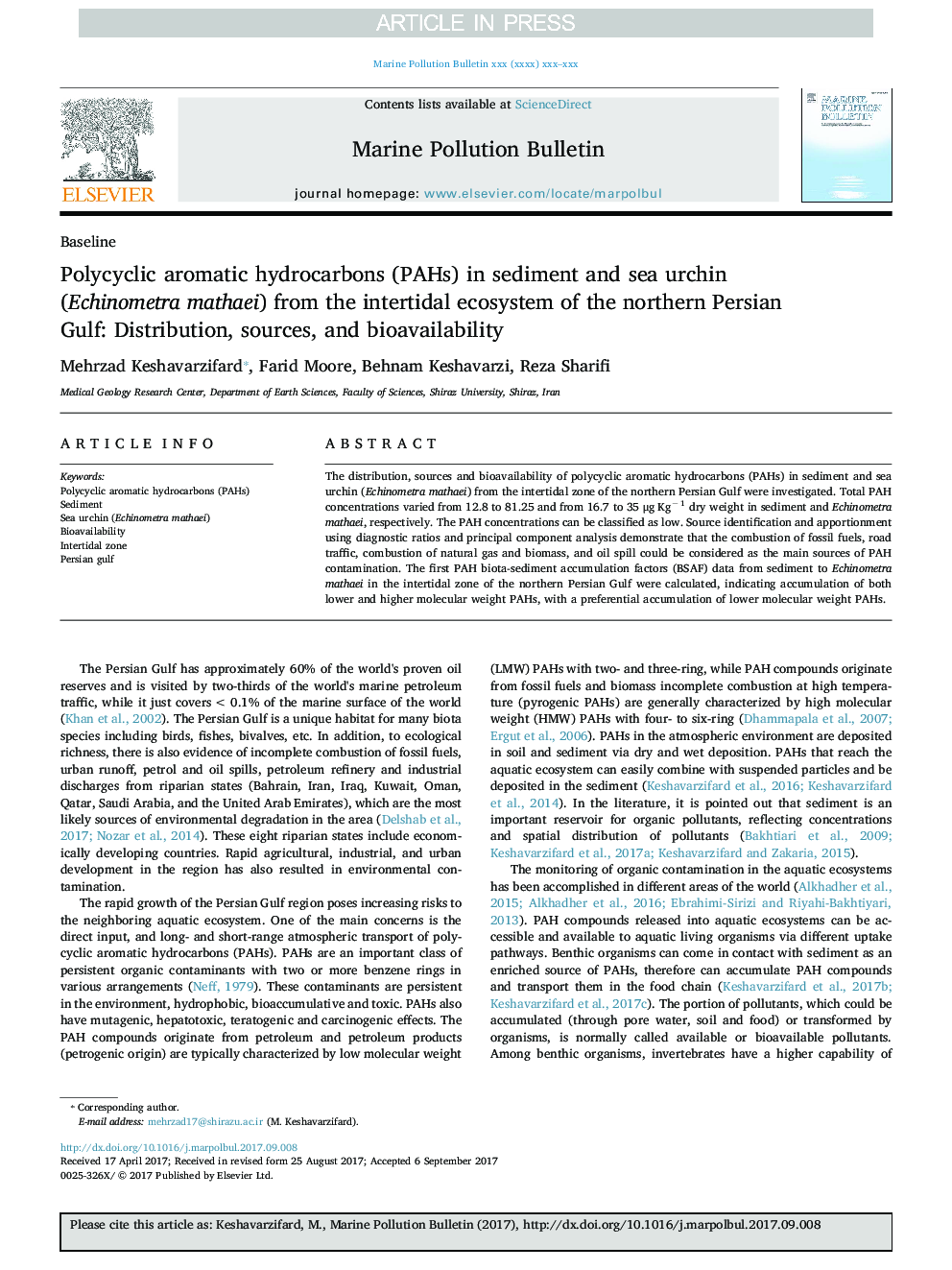| Article ID | Journal | Published Year | Pages | File Type |
|---|---|---|---|---|
| 8872415 | Marine Pollution Bulletin | 2017 | 8 Pages |
Abstract
The distribution, sources and bioavailability of polycyclic aromatic hydrocarbons (PAHs) in sediment and sea urchin (Echinometra mathaei) from the intertidal zone of the northern Persian Gulf were investigated. Total PAH concentrations varied from 12.8 to 81.25 and from 16.7 to 35 μg Kgâ 1 dry weight in sediment and Echinometra mathaei, respectively. The PAH concentrations can be classified as low. Source identification and apportionment using diagnostic ratios and principal component analysis demonstrate that the combustion of fossil fuels, road traffic, combustion of natural gas and biomass, and oil spill could be considered as the main sources of PAH contamination. The first PAH biota-sediment accumulation factors (BSAF) data from sediment to Echinometra mathaei in the intertidal zone of the northern Persian Gulf were calculated, indicating accumulation of both lower and higher molecular weight PAHs, with a preferential accumulation of lower molecular weight PAHs.
Related Topics
Physical Sciences and Engineering
Earth and Planetary Sciences
Oceanography
Authors
Mehrzad Keshavarzifard, Farid Moore, Behnam Keshavarzi, Reza Sharifi,
